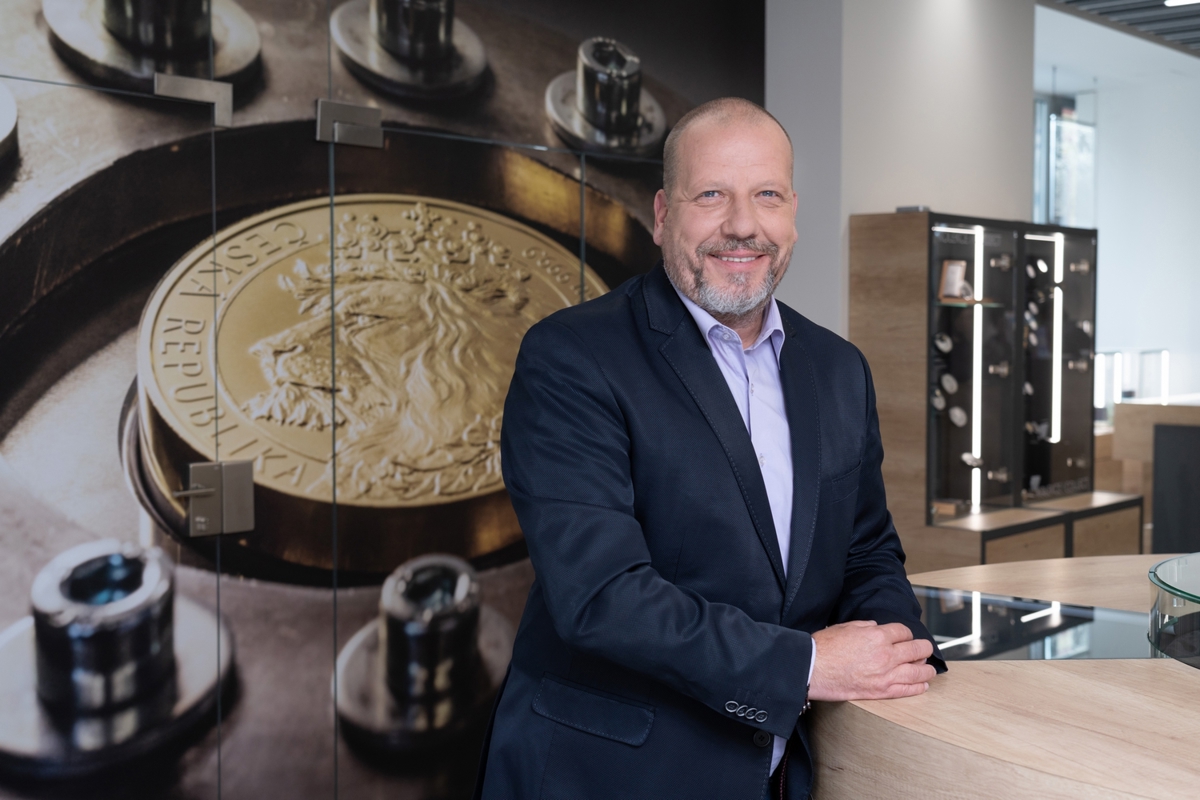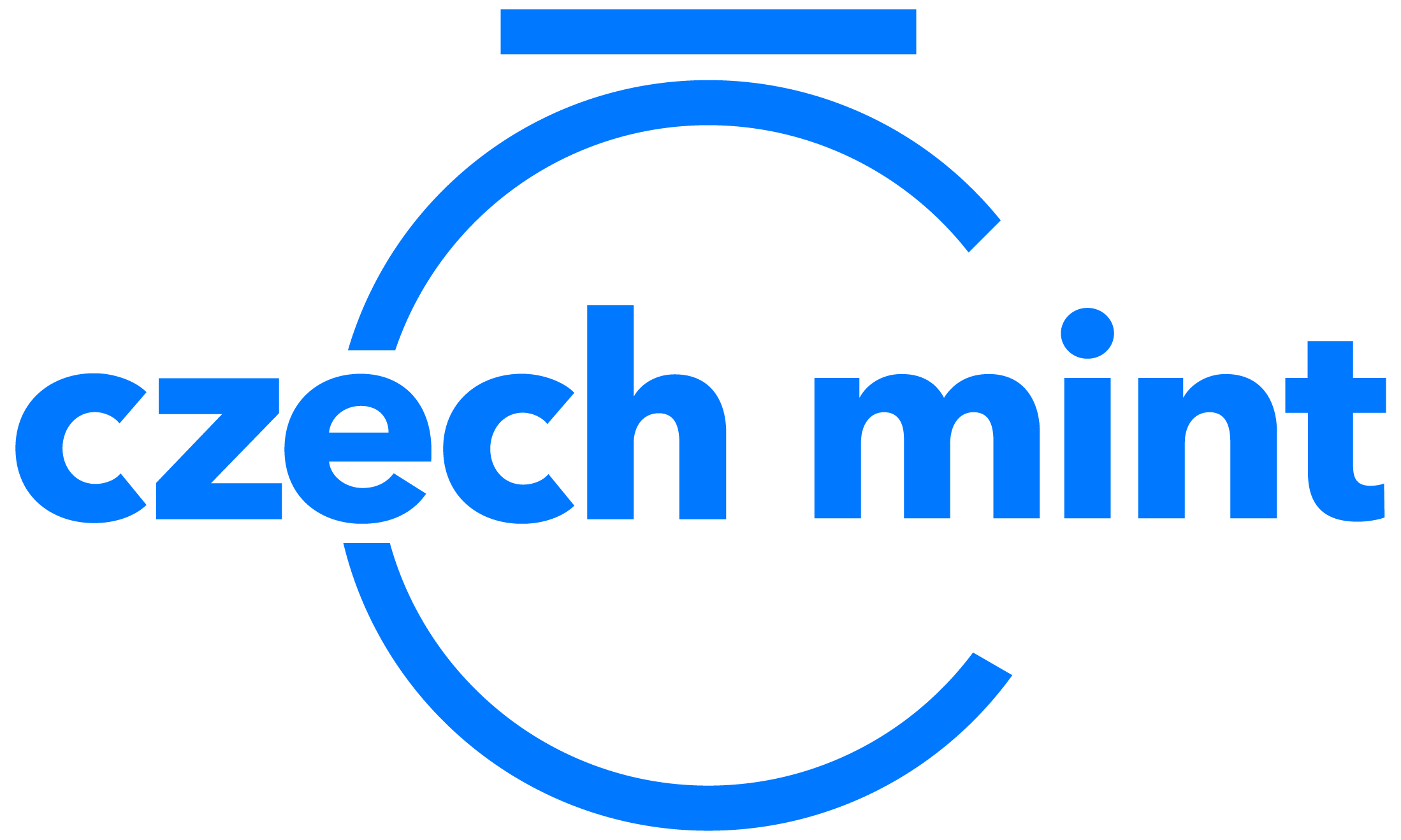Is it worth waiting for the price of gold to fall?
The right time to buy may be now, says Aleš Brix, marketing director of the Czech Mint. The magic of gold lies, among other things, in the fact that what could be bought for half a kilogram of gold 50 years ago is available for the same equivalent now. Predictions that the price of gold has a price ceiling have not been confirmed.
The $2,000 per troy ounce gold price is long past, with the precious metal currently selling above $2,330 per troy ounce. Is it possible to estimate how far the price of gold can climb and what are the factors that will pull it up?
It's quite a complicated matter. The fact is that central bank purchases are a huge factor at the moment. In particular, the Chinese, Indians, Turks and Germans are dealing with this. And the fact that the banks are buying gold for their reserves increases demand and therefore the price. At the same time, the interest in investing in gold is especially evident in crisis years. At the moment, it's about hedging, when banks or investment firms are trying to look to the future in a 'what if' way… Paradoxically, the Czechs are more likely to perceive that gold is currently high and expensive. But it is questionable whether this is the right view given the current development.
Why?
China, for example, allowed private purchases of gold about a decade ago, and since then demand there has been growing at an incredible rate. Last year, the Chinese banking sector bought over 700 tonnes of gold and the private sector twice that. Czech figures show that recently, after the new Czech National Bank governor took office, the approach to gold has changed here too. The central bank's target is to have 100 tonnes of gold. It is a change in trend. It is a fact that the Czechs have historically bought more gold than the CNB. Certainly in the past. The question is whether the wait-and-see attitude that prevails in Europe is the right approach, whether it is the right approach to wait for gold to go down again. And it is very unlikely to happen. The predictions for us are that you could end up at three thousand dollars in four, five years. Maybe even sooner if something happens that we can't predict. Like if China decides to escalate regional tensions with Taiwan, or if the simmering conflict between Iran and the US escalates against the backdrop of Israel's conflict in Palestine. I was at a conference in Dubai at the end of last year and there was very open talk about the emergence of a third reserve currency. It is called BRICS and it is to be backed by gold. It should create a counterweight to the existing world economies and to the dollar as the world's most widely used reserve currency. It is being considered by Brazil, Russia, India, China, South Africa and many other countries, not just in Africa. The question is when they will succeed. It's not far off…
Would this project have weight?
Without a doubt. It's reasonably conceived. The populations of these countries alone represent almost 40% of the world's population with a significant GDP, so it carries a lot of weight. It would certainly have an impact on a lot of other things. It all translates into where demand oscillates today. It is about losing influence on the one hand and gaining influence on the other. If the prevailing view in the Czech Republic is that gold is expensive and its price is discouraging, we can also look at it – in the context of the situation and possible future development – as being the most interesting price at the moment with a view forward.
Are the aforementioned crises a catalyst for gold demand?
The really sharp surge in interest in gold came with the hit of the "hard" Covid. It was extreme. We closed up stores and, like every other trader in the world, just ordered gold over the phone. People called and took anything. We were handling orders in the hundreds to thousands. There was a regular panic about what was going to happen, and people felt the need to hedge.
How is it now?
People are walking away from so-called paper gold, exchanging it for money or physical gold. There's talk of as much as $35 billion. The change is significant. There's a parallel with cryptocurrencies – the willingness to buy bitcoin is similar to the willingness to own gold. Inflation is also an important driver. It's working well for marketing. Governments are cutting benefits, government contributions, and people are logically looking for something where they can maximize or at least protect their money.
What is the balance between gold demand and gold production?
The correlation is obvious. The moment the price of gold or the metal in general rises and a trader is able to sell it at a higher price, with a view of, say, eight, ten, fifteen years, new mines will open. There is some prospect, but that may end, and the mines will be shut down and mining will be reduced. There is also a correlation between price and production, also in terms of investment in mining company stocks.
What is the interest in investing in gold in the Czech Republic in general?
We are not here to tell clients that they should put everything into precious metals. However, we have comparisons with other countries and the command of the times might well be: "If you have money, buy gold, if you don't have money, sell gold." That's how it works. People from the most ordinary classes of people in Europe are taking advantage of this. In the West, precious metals are said to make up five, six, even twelve and fifteen percent of these people's portfolios. In the Czech Republic, it is still one percent. We are still a long way from the example set by perhaps more informed and educated people in Western countries. Yet we know that the Czechs are sitting on spare money. And they know it themselves. We recently did a statistic which showed that Czechs have nearly three trillion Czech crowns in their current accounts. It wasn't that much before. If a person has hundreds of thousands, it makes sense to think what to do with that money. However, a conservative approach still prevails.
What could be the argument for the Czechs to reconsider this cautious attitude?
If you consider an ordinary car, forty years ago, it cost half a kilogram of gold. Today, a kilogram of gold costs one million seven hundred crowns, and for this money, or rather for half of it, you can also buy a decent car. It is still half a kilo of gold. And that is what gives gold its attractiveness. It is expensive, but at the same time the money loses value. Gold is catching up, made possible by the removal of its link to the dollar. If somebody comes in today with the same piece of gold as thirty, forty years ago, they get a completely comparable product for it as they did back then. That's the genius of it. Moreover, I don't know of anything that can be routinely bought "off the street" without a 21 percent VAT.
For those who hear these arguments – is there a prevailing trend to buy precious metal and leave it in the vault, or is there more of a tendency to actively trade it?
In the Czech Republic we have experience with people creating a sort of foundation for themselves and their families. These are their reserves. But as time goes on, for example, since we launched the Czech Lion coin a few years ago, we can see how the willingness to work actively with gold is growing. This applies to those who bought gold several years ago as well as those who are just now coming to it. And we are back to the right question: is it time to buy gold or wait? For me, the indications are that the price will probably go up further.
What about silver?
It doesn't have the benefit of VAT exemption, but on the other hand it is more affordable. We have clients who prefer to buy silver in large volumes, even with relative regularity. Bullion coins or silver with some artistic design, if it has added value. People say it is a long term metal, so it may have that interesting prognosis in the near future. It has room to grow.

 čeština
čeština
 slovenčina
slovenčina
 english
english
